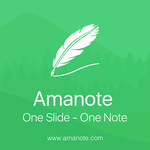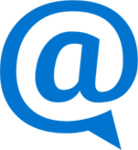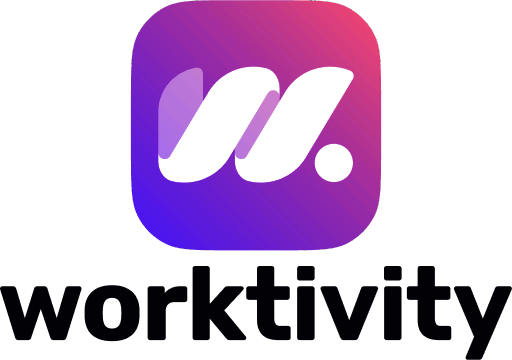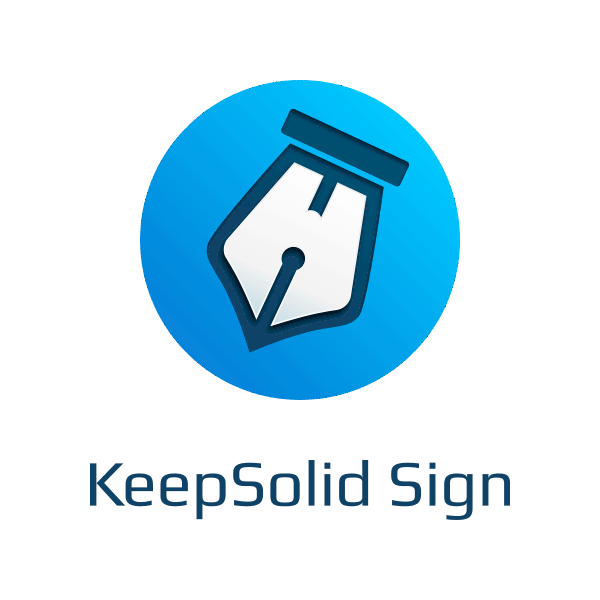Description

Amanote

Wordzen
Comprehensive Overview: Amanote vs Wordzen
Amanote
a) Primary Functions and Target Markets
Amanote is primarily an educational technology tool designed to enhance the note-taking experience for students and academics. Its main functionalities include:
- Synchronized Note-Taking: Amanote allows users to take notes that are synchronized with lecture slides and other educational materials.
- Interactive Learning: It provides features for annotating, highlighting, and adding comments directly on lecture slides or PDF documents.
- Organizational Tools: Users can categorize and organize their notes, making it easier to retrieve information later.
Target Markets:
- Students: Particularly those in higher education settings who need to take comprehensive and organized notes during lectures.
- Academics: Professors and educators who distribute lecture notes and are interested in interactive teaching methods.
- Educational Institutions: Universities and colleges that wish to offer integrated learning solutions.
b) Market Share and User Base
Amanote holds a niche position within the ed-tech market. While it may not have the expansive user base of broader educational platforms or note-taking apps like Microsoft OneNote or Evernote, it is tailored specifically for an academic setting, which provides it a distinctive edge among students and educational institutions.
c) Key Differentiating Factors
- Seamless Integration with Lectures: Amanote’s ability to link notes directly with lecture slides differentiates it from more generalized note-taking apps.
- Focus on Education: Unlike general note-taking apps, Amanote is tailored for an academic environment, emphasizing features that are beneficial in a learning context.
- Student-Centric Design: The interface and function set are specifically designed to cater to the needs of students and educators, focusing on education-related note organization and retrieval.
Wordzen
a) Primary Functions and Target Markets
Wordzen is an automated writing service that aims to enhance email communications. Its primary functions include:
- Email Editing and Composition: It provides professional editing of email drafts to improve clarity, tone, and effectiveness.
- AI-Assisted Writing: Incorporates AI tools to assist in composing and refining emails with appropriate language and structure.
- Time-Saving Features: Automates email responses and follow-ups to save users time on routine tasks.
Target Markets:
- Professionals: Individuals who frequently communicate via email and require a polished, professional tone.
- Sales Teams: Businesses that rely on email for client communications and lead generation.
- Customer Service: Departments looking to maintain high-quality interactions with clients through email.
b) Market Share and User Base
Wordzen occupies a specific niche within the professional communication tools market, particularly focusing on those who require improved email management. It competes with broader email enhancement tools but distinguishes itself by offering highly personalized editing and content refinement features.
c) Key Differentiating Factors
- Human Touch with AI Backend: While many email tools focus entirely on AI-generated responses, Wordzen integrates human editing to ensure quality.
- Professional Polishing: Its core value proposition is the refinement of email communication, which sets it apart from tools that simply provide templates or automation.
- Targeted at Email: Unlike general writing tools, Wordzen’s specialization in email makes it highly optimized for this form of communication, addressing specific email drafting challenges.
Comparison
In terms of overall market share, both Amanote and Wordzen address niche markets with specific functionalities tailored to their users' needs. Amanote appeals to the academic community with features focused on learning and note-taking, whereas Wordzen targets professionals who prioritize clear and effective email communication. Their distinctive features and targeted user bases mean they do not directly compete with each other, and both serve specialized needs within their respective industries.
Contact Info

Year founded :
2016
Not Available
Not Available
Belgium
http://www.linkedin.com/company/amanote

Year founded :
2015
+1 937-838-0354
Not Available
United States
http://www.linkedin.com/company/wordzen-for-gmail
Feature Similarity Breakdown: Amanote, Wordzen
To provide a detailed feature similarity breakdown for Amanote and Wordzen, let's explore the three categories you've outlined:
a) Core Features in Common
-
Focus on Enhancing Productivity:
- Both Amanote and Wordzen are designed to enhance user productivity. Amanote focuses on improving note-taking effectiveness during lectures and meetings, while Wordzen improves email management by proofreading and editing emails.
-
User Assistance:
- Both tools offer assistance in real-time: Amanote aids in better note organization during real-time events like lectures, whereas Wordzen provides real-time email editing and completion assistance.
-
File Integration & Collaboration:
- Amanote offers integration with PDF files, allowing annotations directly on lecture slides or documents. Similarly, Wordzen integrates with email systems like Gmail to streamline email drafting and sending.
b) User Interface Comparison
- Amanote:
- The interface is typically clean and academic-oriented, with features centered around note-taking and annotation. Users can expect an interface that is straightforward, with areas designated for slide presentation, note entry, and organizational tools.
- Wordzen:
- Wordzen’s interface is strongly integrated with Gmail, appearing as an extension. Its layout is designed to be seamless with Gmail’s existing interface, providing editing tools within the email composition window rather than an external app.
c) Unique Features
- Amanote Unique Features:
- Lecture Slide Synchronization: Amanote allows students to take notes synchronized directly with lecture slides or presentations, making it particularly valuable in educational settings.
- Note Structuring: It offers structural tools for organizing notes by chapters, sections, and topics, which is a strong feature for detailed academic note-taking.
- Wordzen Unique Features:
- Human Editor Integration: One of Wordzen’s standout features is the integration of human editors who proofread and enhance your emails. This provides a level of detail and refinement beyond typical grammar-check tools.
- Email Drafting for a Natural Tone: The service includes content suggestions to make emails more professionally articulated and well-composed.
Overall, while both Amanote and Wordzen focus on enhancing productivity and efficiency, Amanote is unique for its educational applications, providing tools specifically for students and educators. Wordzen, on the other hand, sets itself apart with its deep integration into Gmail and use of human editors to ensure high-quality email communication.
Features

Not Available

Not Available
Best Fit Use Cases: Amanote, Wordzen
Here's a detailed look at the use cases for Amanote and Wordzen, including their best fit types of businesses, projects, and scenarios, as well as how they cater to different industry verticals and company sizes:
Amanote
a) Best Fit Use Cases:
- Academic Institutions and Students: Amanote is designed as an effective tool for note-taking, especially suited for academic settings. It's ideal for students who need to take detailed and organized notes during lectures or while reading academic materials.
- Training and Workshops: Businesses or organizations that conduct frequent training sessions, workshops, or seminars can benefit from Amanote. It enables participants to annotate slides or handouts efficiently, making it easier to review and retain information.
- R&D Departments: Research and development teams in various industries can use Amanote to document experiments, findings, and insights during brainstorming sessions or meetings.
d) Industry Verticals and Company Sizes:
- Education: Universities, colleges, and other educational institutions are key users of Amanote due to its functionality tailored towards lecture notes and academic materials.
- Corporate Training: Large corporations and SMEs (small and medium-sized enterprises) with ongoing employee development programs might find Amanote’s features valuable for their training initiatives.
- Research Organizations: Applicable in industry sectors like pharmaceuticals or technology where documenting research and ideas is critical.
Wordzen
b) Best Fit Scenarios:
- Professional Communications: Wordzen is ideal for businesses needing to enhance their email professionalism. It offers services like proofreading, editing, and ensuring clarity and proper tone, which is crucial for customer-facing emails.
- Customer Support: Companies with a heavy volume of customer emails can use Wordzen to refine their communication, ensuring accuracy and professionalism in responses.
- Sales and Marketing Teams: Sales reps and marketers can leverage Wordzen to craft better outreach emails, proposals, or follow-ups, which can significantly impact conversion rates.
d) Industry Verticals and Company Sizes:
- Small to Medium Enterprises (SMEs): SMEs that lack in-house resources for editing or professional email writing might find Wordzen particularly useful for maintaining high standards in communication.
- E-commerce and Retail: These sectors can use Wordzen to efficiently handle customer inquiries, enhancing the customer service experience through improved email communication.
- Tech Startups: Startups and tech companies, often having informal corporate cultures, can utilize Wordzen to ensure that their emails to clients or investors remain professional and polished.
In summary, Amanote is best suited for educational settings and structured environments such as academic institutions and corporate training, where note-taking and annotation are crucial. Wordzen, on the other hand, caters more to business communication needs, improving the quality and professionalism of emails across diverse industries like sales, customer support, and marketing. Both products address different needs and align with various organizational types and sizes.
Pricing

Pricing Not Available

Pricing Not Available
Metrics History
Metrics History
Comparing teamSize across companies
Conclusion & Final Verdict: Amanote vs Wordzen
To provide a comprehensive conclusion and final verdict on Amanote and Wordzen, let’s evaluate each product's value, pros and cons, and offer some tailored recommendations for potential users.
Conclusion and Final Verdict
a) Overall Value
When assessing the overall value of Amanote and Wordzen, it ultimately depends on the user's primary needs. Amanote tends to offer the best value for students and educators seeking an organized and feature-rich note-taking app tailored for lectures. In contrast, Wordzen excels for professionals and individuals who prioritize email management and appreciate having AI-driven drafting and error-checking tools directly within their email platforms.
b) Pros and Cons
Amanote:
-
Pros:
- Specialized for students and educators, offering an organized way to take notes alongside slides.
- Focuses on aiding learning and productivity through lecture-specific tools.
- Allows for quick searching, tagging, and organization of notes.
- Provides the ability to annotate slides directly.
-
Cons:
- May have a steep learning curve for those unfamiliar with lecture-style note-taking tools.
- Limited to academic and presentation use cases; not ideal for professionals focusing on email productivity.
- Dependence on having slides available to maximize its utility.
Wordzen:
-
Pros:
- Enhances email communication by offering grammar checking and AI-driven email drafts.
- Convenient for professionals who manage a significant number of communications daily.
- Integrates directly with Gmail, making it seamless for users within that ecosystem.
- Provides quick and professional email turnaround.
-
Cons:
- Primary focus on email, lacking versatility outside of this domain.
- Subscription costs could be a barrier for casual or infrequent users.
- Functionality may be limited to specific email clients, reducing broad usability.
c) Recommendations
For Users Choosing Between Amanote and Wordzen:
-
Students and Educators: Those focusing on academic needs should lean towards Amanote. It provides features well-suited for managing lecture notes and presentations, which could significantly enhance study efficiency and educational productivity.
-
Business Professionals and Frequent Email Communicators: If your main goal is to streamline email writing and communication, Wordzen is the better choice. It leverages AI to facilitate a smoother, more professional email experience which can save time and improve the quality of correspondence.
In summary, both Amanote and Wordzen cater to unique audiences and use-cases. Amanote is more academic and educator-focused, whereas Wordzen serves the needs of professionals managing extensive email communications. Your decision should align with where your current priorities most vividly intersect with the strengths of each tool.
Add to compare
Add similar companies



